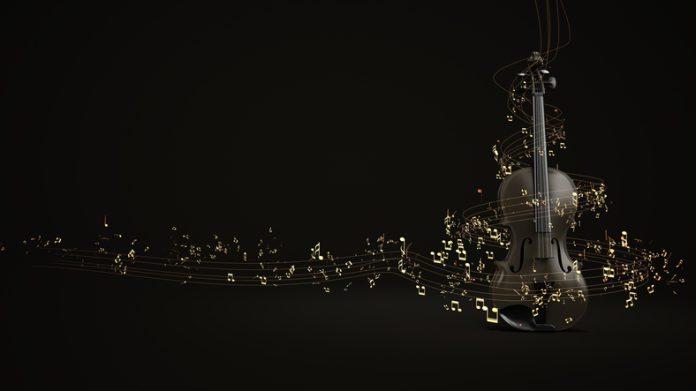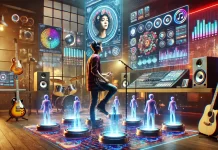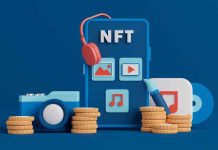
With the rapid advancement of technology, smart instruments have emerged as a revolutionary force in the music industry. These instruments, equipped with embedded sensors, IoT capabilities, and AI-driven analytics, are transforming how artists create, perform, and even learn music. By integrating connectivity and automation, smart instruments are not only enhancing musicianship but also democratizing music production for aspiring artists and hobbyists alike. This article explores the rise of smart instruments, their impact on the creative process, and how they are reshaping musicianship and accessibility.
What Are Smart Instruments?
Smart instruments are musical devices that incorporate advanced digital technologies, such as sensors, actuators, and connectivity features, to enhance their capabilities beyond traditional instruments. Unlike conventional guitars, pianos, or violins, smart instruments can provide real-time feedback, adjust their tuning automatically, and even analyze the user’s playing patterns to offer tailored guidance. Instruments like the Artiphon Orba, Jamstik+, and Yamaha’s Clavinova CSP-295 represent just a few examples of how these technologies are pushing the boundaries of what instruments can do.
Smart Instruments Transforming the Creative Process
One of the key advantages of smart instruments is how they are transforming the way music is composed and produced. By leveraging embedded intelligence, these instruments allow artists to experiment with new sounds, tweak tonal qualities dynamically, and optimize their playing techniques. For instance, smart guitars with sensors can monitor string tension and adjust the sound output accordingly, while smart pianos can respond to a player’s touch and automatically adjust volume and tone for a more expressive performance.
Moreover, the ability to connect smart instruments to digital audio workstations (DAWs) via Bluetooth or Wi-Fi streamlines the recording process. Musicians can easily capture their compositions, make adjustments, and explore new soundscapes without requiring complex setups. This connectivity also allows musicians to collaborate remotely, bridging geographical gaps and encouraging creative partnerships.
Democratizing Music Creation
Smart instruments are not just for professionals. One of the most significant impacts of this technology is its ability to democratize music production. With built-in tutorials, real-time feedback, and user-friendly interfaces, smart instruments make learning music more accessible to beginners. For example, a novice violinist can receive instant feedback on bowing techniques or intonation, speeding up the learning process while tailoring guidance to the player’s unique strengths.
Instruments like the ONE Smart Piano or HyVibe Guitar integrate features that help musicians of all levels explore music creation without needing extensive formal training. This accessibility has opened the door for more people to explore their musical talents, lowering the barriers to entry that once existed in the music world.
Enhancing Live Performances
Smart instruments are also transforming live performances, enabling musicians to create more immersive experiences for their audiences. By integrating with IoT systems, these instruments can communicate with lighting, sound systems, and other stage equipment. For instance, a smart guitar might synchronize with stage lighting, creating a visual and auditory spectacle that enhances the live concert experience.
Additionally, sensors embedded in smart instruments can optimize the on-stage performance by transmitting data about environmental conditions like humidity and temperature, ensuring the instrument stays in optimal condition throughout the show. The ability to connect these instruments to other devices adds a new level of interaction, allowing audience participation or real-time adjustments to the music based on crowd reactions.
Challenges and Considerations
While smart instruments offer numerous benefits, they also present certain challenges. The high cost of smart instruments remains a barrier for some musicians, especially when compared to their traditional counterparts. Additionally, the integration of data-collecting features raises concerns about privacy and data security, as musicians may be wary of how their performance data is used.
Moreover, as smart instruments evolve, there is a learning curve associated with mastering these new technologies. Musicians, educators, and even audiences must familiarize themselves with the capabilities of these advanced devices to fully appreciate their potential. However, training programs and resources are becoming more available, ensuring a smoother transition to this new era of music creation.
Conclusion: A New Era of Music Creation
Music Industry Weekly understands that the rise of smart instruments marks a significant turning point in the music industry. By combining traditional craftsmanship with cutting-edge technology, smart instruments are enhancing musicianship, making music more accessible, and pushing the boundaries of creative expression. As these instruments continue to evolve and become more integrated into the mainstream, they will undoubtedly play a pivotal role in shaping the future of music production, performance, and education.







